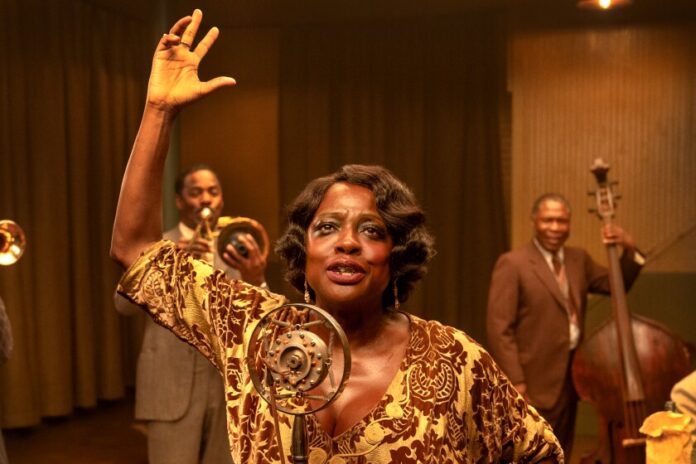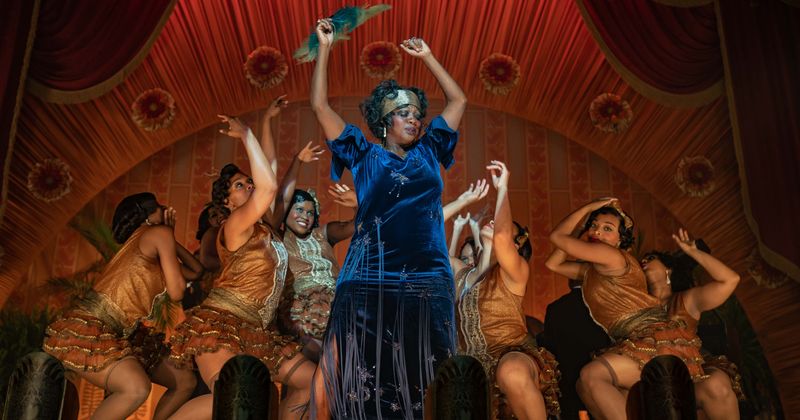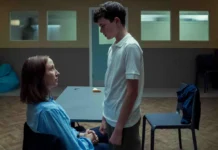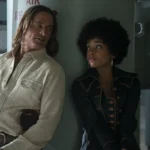What was the Ma Rainey’s Cause of Death? How Did She Die? Let’s find out the truth. Netflix has released its brand new film ‘Ma Rainey’s Black Bottom,’ starring Viola Davis, and it is already receiving good reviews from reviewers and audiences. The film is based on the iconic Mother of Blues singer Ma Rainey and adapts to August Wilson’s drama ‘Ma Rainey’s Black Bottom.’
The movie stars late Chadwick Boseman in his final film performance, with Glynn Turman, Colman Domingo, and Michael Potts in supporting roles. It is directed by George C Wolfe and produced by Denzel Washington, Todd Black, and Dany Wolf. The documentary explores the late iconic vocalist Ma Rainey’s career and personal life. We shed some light on how she died and the long-running scandal that plagued her.
Must Read: Ma Rainey Gold Teeth, Husband, Sexuality, Death and Everything We Know
What Caused Ma Rainey’s Death?
Ma claimed to have been born in Columbus, Georgia, on April 26, 1886. However, according to the 1900 census, her date of birth might have been in September of 1882 (in Alabama). She was the second of five children, and when she was a teenager, she began performing in black minstrel performances. When she married William “Pa” Rainey at the age of 18, she took the name “Ma.” (They later adopted a boy named Danny.)
The husband-and-wife team actually joined Rabbit’s Foot Company, a popular minstrel show at the time. They later founded their own band, Rainey and Rainey, Assassinators of the Blues, and were known as Rainey and Rainey, Assassinators of the Blues. Ma grew in popularity as the genre grew in popularity. Music producer J. Mayo Williams, who worked for Paramount Records, discovered her in 1923.
They signed Ma, and she recorded her first eight compositions in Chicago. In reality, she would go on to record more than 100 songs over the next five years, demonstrating her natural expertise. Ma was also heavily promoted by the record label, earning her names such as “Songbird of the South” and “Gold-Neck Woman of the Blues.”
Ma collaborated alongside artists such as Joe “King” Oliver, Louis Armstrong, Sidney Bechet, and Pops Foster over her successful career. On songs like “Moonshine Blues,” she teamed with the legendary Louis Armstrong. In 1924, she performed with Thomas Dorsey’s Wildcats Jazz Band on a tour of the Theater Owners Booking Association (TOBA).
Albert Wynn, Dave Nelson, and Ed Pollack were among the other members. (They’d keep touring together for the following few years.) Dorsey, on the other hand, had to quit the band by 1926. Under the moniker Ma Rainey and her Georgia Jazz Band, she released a number of tunes.
Her kind of music was no longer in demand at the turn of the decade, which had a significant impact on her career. Her contract with Paramount was later cancelled. Ma returned to her hometown in 1935 and opened three theatres: the Lyric, the Airdrome, and the Liberty Theatre. She was also rumoured to be a member of Friendship Baptist Church. A heart attack claimed the life of the blues musician in Rome, Georgia in 1939.
Many honours have been bestowed on Ma after her death. In 1983, she was inducted into both the Blues Foundation and the Rock and Roll Hall of Fame (in 1990). Aside from that, in 1994, the United States Postal Service issued a 29 cent stamp in her honour. “See See Rider,” one of her songs, was also inducted into the Grammy Hall of Fame. But that’s not all: the National Recording Preservation Board of the Library of Congress added it to the National Recording Registry.
Ma was shamelessly herself at all times. Given that she was black and bisexual at the time, she could also be considered a pioneer. There were even speculations that she had a love relationship with Bessie Smith, a fellow blues singer. “Went out last night with a bunch of my buddies,” Ma says in her song “Prove It on Me.” They have to be ladies, since I’m not fond of men.”
“She couldn’t control the world and segregation and exploitation, but she could control when she walked on the stage, she could manage the audience no matter,” Florene Dawkins, director of Ma Rainey House and Blues Museum, said of the legend.
She mesmerised people, and that was her control, her power, and she used it to accomplish her goals. ‘They may not respect me, like me, or think I’m a full citizen, but I mesmerise them when I’m on stage.’ ‘I’ve got them in my hands.’















